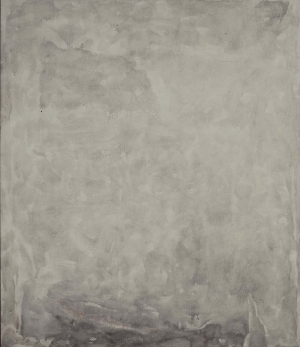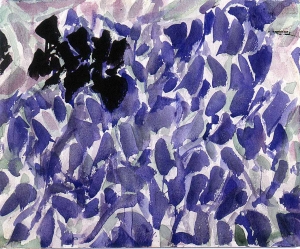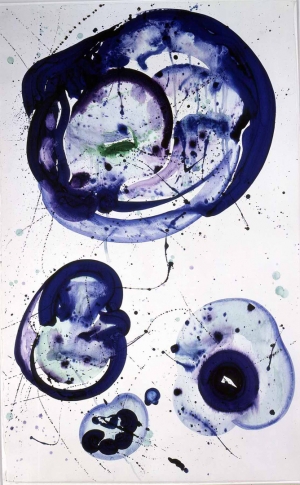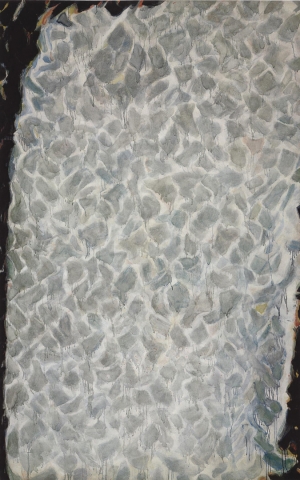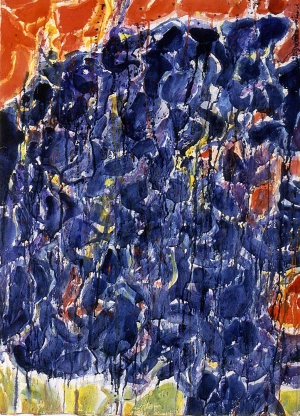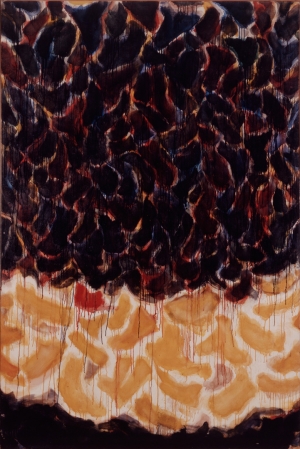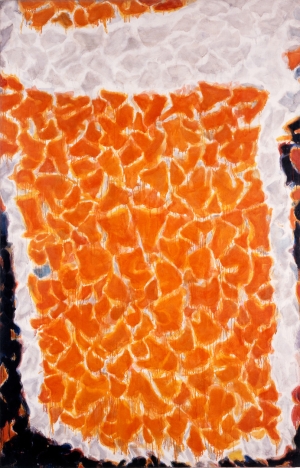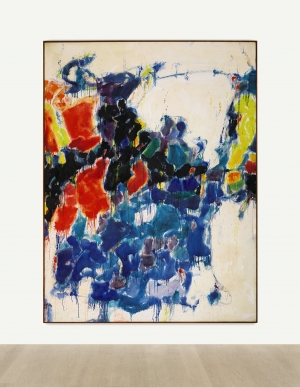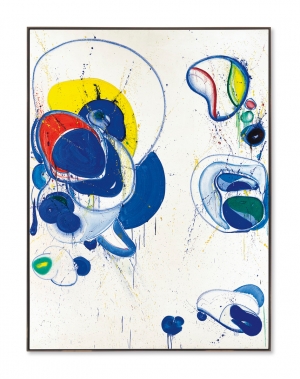Sam Francis
Artist Bio
Sam Francis moved to Paris from the California Bay Area in the early 1950s, drawn to the old European city out of a sense of wanderlust and a need to develop his painting. Although Francis often had trouble articulating why he made the move, the impact was immediately clear: advances in his painting came to distinguish his work from the efforts of the Abstract Expressionists on the East Coast of the United States. Francis was inspired by Paris, by Claude Monet’s water lilies and Pierre Bonnard’s windblown leaves and outdoor tabletops, and those influences entered his work in the mid-1950s in a dynamic way. He transmuted many of the interests of the Impressionists into a contemporary vocabulary, aiming to capture the fleeting wonder of everyday light and movement through a patchwork of pigment.
Francis’s paintings are often described as atmospheric, able to conjure an array of emotions according to changing conditions of weather and temperature. Francis spoke of the similarities between the sky of Paris and the Bay Area, and it is helpful in viewing Big Orange, 1954–55, to think of moving clouds or the shimmering surface of water, perhaps even a thick Pacific fog rolling into San Francisco Bay. What is unique to Big Orange in the development of Francis’s work, however, is the presence of overlapping black and white borders of paint surrounding the impacted surface of orange. His experiments with borders and the containment of washes of color would inform his work for decades, as he became increasingly concerned with the differences between solids and voids, boundaries and fields.
As Francis’s career progressed, the synthesis of the softer sides of natural beauty and painterly effects continued to develop in technique and sophistication. Tokyo Blue, 1961, is part of a series completed in the early 1960s, when Francis suffered a recurrence of tuberculosis that left him bedridden for almost a year. In Tokyo Blue, a work of acrylic on paper, the visual reference seems to be the eye itself, as both an instrument of looking and an interpreter of external stimuli. The floating shapes suggest membranes filled with vitreous fluid inside the retina, yet the execution of the paint, and the morphing light, color, and shapes in various stages of being, suggest the nature of vision itself, how optical data moves from obscurity to visibility. For Francis, Tokyo Blue encapsulates looking in all its subtlety.
